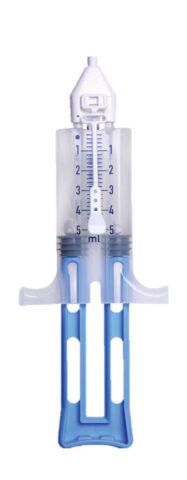Outpatient appointment
Collaborative Working Reduces Overnight Stays For Parotid Surgeries In Value Based Procurement Pilot
This article has been updated with new Frequently Asked Questions (FAQs) in 2023.
Case Study First Published in August 2021
I was impressed with the support in implementing the new product and technique and looking at the full patient journey. The support provided by Baxter helped ensure all aspects of the patients journey were mapped and helped highlight areas of focus such as meeting patient’s expectations for day case surgery prior to surgery.
Navin Mani, Consultant Head and Neck Surgeon, Manchester NHS Foundation Trust
The Challenge
Manchester University NHS Foundation Trust is an NHS Acute Foundation Trust which operates 10 hospitals throughout Greater Manchester. It is the largest NHS trust in the United Kingdom, with an income of £1.6 billion and 21,945 staff.
The trust processes 93 parotid surgery cases per annum. A parotidectomy is the surgical removal of part or all of the parotid gland. The operation is performed under general anaesthetic. At the end of the operation the surgeon places a drain (plastic tube) through the skin in order to prevent any blood clot collecting under the skin.
Patients spend on average 2.5 nights in hospital. Working with the clinical and procurement teams at Manchester NHS FT, Baxter Healthcare successfully piloted a new standard of care which removes the need for a surgical drain, thereby reducing a patient’s length of stay (LoS) in hospital to just a single day. Please see the before and after process flow below for further information.
The Aim
The aim of this Value Based Procurement pilot was to negate the use of a surgical drain for parotidectomy cases to:
- Reduce the patient length of stay, enabling them to recover on the day case unit.
- Improve patient flow and increase activity.
- Reduce the cost for each parotidectomy case.
The Solution
Baxter Healthcare and Manchester NHS FT were keen to explore how Value Based Procurement could be applied in practice. Baxter worked in partnership the trust’s Procurement, and its Head and Neck Clinical teams, to convert all appropriate inpatient parotidectomy cases to a new standard of care, requiring no surgical drain and enabling the patient to go home on the same day.
This was achieved by using ARTISS in the clinical pathway and working with the clinical team to change the surgical technique.
ARTISS is a tissue glue indicated for use to adhere/seal subcutaneous tissue in plastic, reconstructive, and burn surgery, as a replacement or an adjunct to sutures or staples.

The Process
The case study included 12 parotidectomy cases performed by the Trust using ARTISS.
Redesigning the patient pathway required a steep surgical learning curve. A step by step approach was taken to performing the first few cases without inserting a surgical drain.
The patients were observed overnight to ensure the surgeon was confident with the product, technique, and outcome. Once confident the product had worked, the surgeon then discharged any new appropriate cases as day case procedures.
The Baxter Healthcare project team also facilitated a broader pathway analysis to ensure no other bottlenecks prevented day case discharge, such as ensuring the patient was booked in as a day case procedure.
The Results
- Reducing the need for overnight stays in favour of a day case procedure.
- Reducing patient discomfort. The patient goes home swiftly without the discomfort and challenges a surgical drain can create. With a drain the patient may have experienced some discomfort when the drain is pulled out. Pain relief may also have been given prior to the drain removal.
- Enabling the trust to save bed days, drive cost efficiencies and reallocate resources (beds) for other procedures.
Before
Pre-op assessment
Admission process
Procedure in theatre
Insertion of surgical site drain
Patient moved to recovery ward
Ward stay Average 2.5 days
Monitoring of surgical drain volume
Patient discharged
After
Outpatient appointment
Pre-op assessment
Admission process
Procedure in theatre
Patient moved to day case unit
Patient discharged on day of surgery
The net benefit to the trust is 2.5 days per patient. Trust income is unaffected as tariff for this procedure remains the same.
Financial Benefits
Based on the Manchester NHS FT experience and a throughput of 93 day case parotidectomy patients per annum:
- Saving per patient is forecast at £805. This is based on price banding for the trust and as per the case study process flow.
- Annual forecasted saving is £74,865, for the pilot site based on agreed rate of £350 per day.
- Validated as cost avoidance savings.
Operational Benefits
The pilot has demonstrated how working in partnership with suppliers can identify opportunities for process improvement and provide the Trust with the necessary external support to deliver the changes required. In this project, the outcome was released capacity and improved patient experience.
Further Opportunities
Training plans are in place to roll the project out fully within the department, and patients’ length of stay will continue to be monitored.
There is a clear opportunity to adopt this process with 230 procedures to target across Greater Manchester STP for standardisation, which could release 575 bed days, avoiding costs of £185,150.
The real benefits of moving this procedure to day case, is that the released beds are freed for use following other procedures. It was our intention to look at other procedures in Head & Neck, initially. This might be with procedures where patients are routinely sent to ICU before moving to the ward for recovery. If say, neck dissections could be performed with the expectation that the patient would recover on the ward, then the question is how many ICU bed days could be saved. Obviously, the financial implications of saving an ICU bed are much greater than those for a ward bed.
In turn, that then begs the question of how many procedures can go ahead as planned because there is an ICU bed freed up. So, more income, reduced waiting lists, faster flow.
There is also the possibility of higher tariffs for day case than inpatient procedures, and a link to GIRFT advice on what procedures should be performed as day case as best practice. It’s fair to say that all the issues we faced around patient flow, waiting lists etc. still exist and are now magnified by having to restart services in a completely different way so this kind of pathway redesign will support that.
Barbara Rimmington MCIPS, Head of Purchasing – MRI, Manchester NHS Foundation Trust
Next Steps
For more information on this product and pilot project please contact:
Ian Dodd
Clinical Engagement and Implementation Manager: Medical and Surgical Consumables
Wound Closure and Surgical Mesh
07985 259 079
See our Useful Links section for more information on how Value Based Procurement can support your organisation.
Please note:
This case study was carried out at Manchester NHS Foundation Trust in conjunction with Baxter Healthcare. There may be other comparable solutions within the market that are suitable in addressing the challenges highlighted in this report.
This case study was an example to show how pathway redesign methodology and other products within the Baxter haemostat and sealant range can also be used to support improved patient outcomes using this systematic approach.
Frequently Asked Questions (FAQs)
How does this product add Value?
Instead of using sutures or staples to close a surgical wound, ARTISS seals the skin / skin graft directly to the subcutaneous tissue below, using a specialised human fibrin matrix solution. This also negates the need for a post-op surgical drain, whilst reducing both patient discomfort and hospital stay. The patient goes home swiftly without the discomfort and challenges a surgical drain can create.
How can ARTISS be procured?
For further information please contact:
Ian Dodd
Clinical Engagement and Implementation Manager: Medical and Surgical Consumables
Wound Closure and Surgical Mesh
07985 259 079
What clinical support is available from the supplier?
Baxter Healthcare Advanced Surgery have a dedicated team of Account Managers who can support the implementation of this pathway for Head and Neck surgery. For further information please contact Baxter Healthcare Advanced Surgery .
Are there any other procedures that can use ARTISS?
ARTISS is a tissue glue indicated for use to adhere/seal subcutaneous tissue in plastic, reconstructive and burn surgery, as a replacement or an adjunct to sutures or staples. For further guidance on other procedural use please contact Baxter Healthcare Advanced Surgery directly.
Links section
-
Wound Closure Framework
This framework covers the full range of products that are used to close wounds or tissue approximation.
-
Value Based Procurement
NHS Supply Chain is working on a project designed to consider the potential benefits and practical application of Value Based Procurement.
